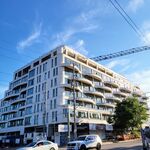TheTigerMaster
Superstar
the King street pilot still doesn't change the fact that the 504 stops too frequently, moves people too slowly and is often overcapacity during rush hour. it would probably be best to upgrade the service beyond streetcars at some point.
We still need to get this right. The 504 King will be one of the most heavily used transit routes in our city, with or without the Ontario Line.good thing a new downtown subway roughly following the route of the 504 is under construction as we speak!




